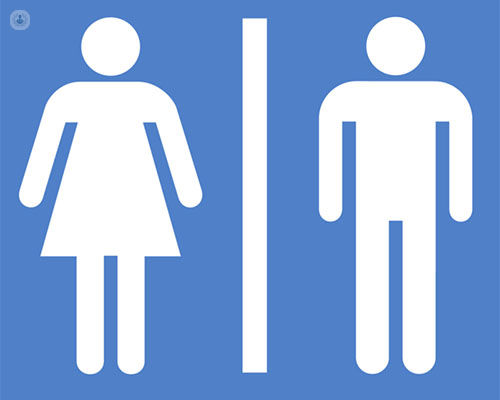Overactive bladder: desperate to go
Written by:A sudden urge to urinate and the leakage of urine are the classic symptoms of overactive bladder (OAB). The condition can be very distressing for sufferers, who may experience considerable disruption to their work, social life, and sleep, leading to anxiety and depression. Overactive bladder, however, is more common than you might think and there are treatments available, as one of our top London-based consultant urological surgeons Sachin Malde explains.


What are the symptoms of overactive bladder?
Overactive bladder (OAB) is a common condition that can affect people of any age. Typically, the sufferer will experience a sudden, uncontrollable urge to urinate. If this results in the leakage of urine, it is known as urge incontinence. A greater frequency of trips to the loo during the day or at night may also be present with OAB.
What causes overactive bladder?
In most cases, the exact cause of overactive bladder and urge incontinence is unknown, although a number of things can lead to the symptoms of OAB, which can include;
- Certain medications
- Diabetes
- Urinary tract infections
- Bladder tumours
- An enlarged prostate gland in men
- Excessive alcohol
- Excessive caffeine
- Incomplete bladder emptying
- Previous surgical procedures or radiotherapy treatment
- Conditions that affect the nerve supply to the bladder, such as multiple sclerosis or Parkinson’s disease
Can overactive bladder be treated?
The good news for many is that, depending on the severity of symptoms, overactive bladder can be managed in a range of ways.
Firstly, it is recommended that you reduce your intake of alcohol and caffeine. Thereafter, bladder training has been demonstrated to be effective in improving overactive bladder symptoms. Usually, a specialist is required to produce the best results.
If symptoms remain problematic, tablets may be recommended to relax the bladder. Again, these have been shown to be effective for many patients, although they do carry some potential side effects including dry mouth and constipation.
If these options fail to alleviate symptoms, there are still courses of treatment available; specifically, Botox injections or the use of a ‘bladder pacemaker’ in a procedure known as sacral nerve stimulation.
Bladder Botox injections work by lessening the overactive contractions. The procedure can be performed in 5 to 10 minutes under local anaesthetic and the effects last for 6 to 12 months.
Sacral nerve stimulation, or sacral neuromodulation, uses a pacemaker-like device to send electrical signals to the nerves that control your bladder. The treatment is effective for about 70% of patients.
If you are distressed by symptoms of OAB, then don’t suffer in silence – consult a specialist for advice about treatment.


